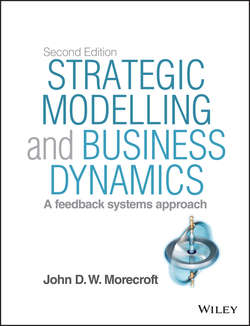Читать книгу Strategic Modelling and Business Dynamics - Morecroft John D. - Страница 8
На сайте Литреса книга снята с продажи.
Preface from the First Edition 3
ОглавлениеI first became interested in models and modelling when I studied physics as an undergraduate at Bristol University. Or perhaps my interest was really awakened much earlier when, as a boy of nine or 10, my friend Alan Green introduced me to the board game of Monopoly. I soon became fascinated with board games of all sorts and accumulated a collection that included Cluedo (a detective murder mystery game, also known as Clue), Railroader (a game to build and operate your own wild-west railroad in competition with rival railway companies), and Buccaneer (a game of pirate ships and treasure collecting). I was intrigued by the colourful tokens, the chance cards, the rules and the evocative boards that showed city sights, a murder mansion, a treasure island or whatever was needed to fire the imagination. In Buccaneer, the game's clever distinction between the ‘sailing power’ and ‘fighting power’ of a treasure-seeking frigate is something I still appreciate today. And as a modeller I admire the game designer's artful representation of a pirate's world, set out on a blue-and-white chequered board that serves as an ocean.
Later, after graduating from Bristol, I joined Ford of Europe's operational research department, where computational decision models replaced the abstract and elegant models of physics. There I worked on investment appraisal (justifying the decision to build a new Fiesta car factory in Spain) and dealer location (whereabouts within Bromsgrove, Bury St Edmunds, or other English towns and cities, to site new car dealerships). During the second of my three years with Ford, the company sponsored me on an MSc degree in operational research at London University's Imperial College. It was at Imperial that I first encountered system dynamics, albeit briefly in an elective course on quantitative methods, and this chance encounter eventually led me to apply to the doctoral programme at MIT's Sloan School of Management for a PhD in system dynamics. Hence began the journey that I have pursued ever since.
When I look back over my 40-plus years in the field I see five different phases of work, all of which have contributed to the content of this book and led me to the friends and colleagues who have shaped my thinking. My names for these phases are: (1) manufacturing dynamics and information networks; (2) bounded rationality and behavioural decision making; (3) modelling for learning; (4) the dynamics of strategy; and (5) soft systems and complementary modelling methods.
